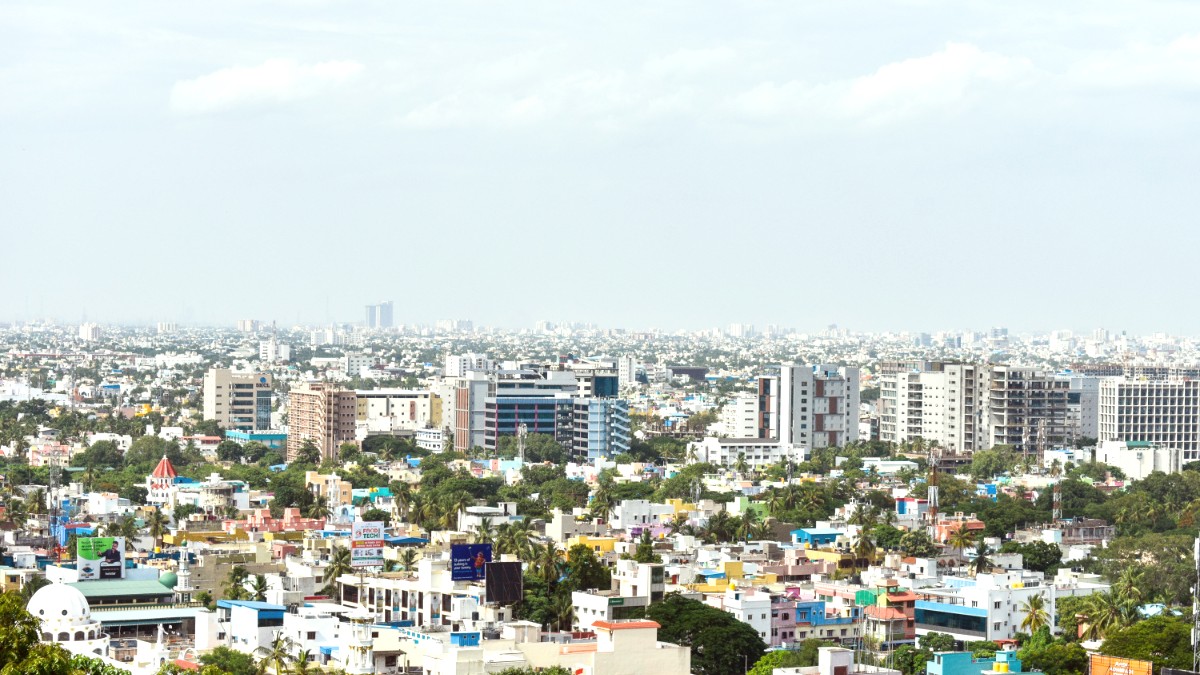
Tamil Nadu, India
These sites are central to Chennai's history and public life. Marina Beach is the second-longest urban natural beach globally, stretching 13 km along the Bay of Bengal.
The wide sandy expanse is great for leisurely strolls and coastline views. Visit in the early morning for sunrise or in the late afternoon/evening to avoid intense sun and enjoy the lively atmosphere.
Fort St. George access to government offices may be restricted. Museum closed Fridays.
Large, multi-domed mosque. Named from historical practice of illuminating its hall with 1,000 oil lamps.
One of India's oldest churches (1712), known for its belfry with six bells and historic Armenian graves.
Established 1896, one of India's four National Depository Libraries. Indo-Saracenic building.
One of few national parks within city limits. Has habitat for blackbucks, spotted deer, jackals, and birds.
Reptile zoo and conservation center on ECR. Houses various crocodiles, alligators, gharials, and reptiles.
Beyond the well-known sights, Chennai holds unique, lesser-explored spots that give a look into local life and art.
Chennai's main fishing harbor. This bustling and authentic place lets you witness the local fishing industry in action. Visit early morning (5:00-8:00 AM) for most activity.
India's largest artists' commune, founded in 1966. It shows contemporary art, sculptures, and handicrafts by resident artists, giving a glimpse into the modern art scene.
The remnants of a bridge over the Adyar River mouth. It offers unique views of the creek, city skyline, and Bay of Bengal. Popular for photography, especially at sunrise or sunset. Visit during daylight hours for safety.
Government-organized farmers' markets where farmers sell fresh produce directly to consumers. It has fresh, affordable vegetables and fruits and gives a glimpse into local daily life. They operate in the mornings.
Take a drive along the picturesque East Coast Road for coastal views, a breath of fresh air, and access to various resorts and attractions outside the city bustle.
Explore historical areas like George Town and Parrys Corner on foot to discover colonial architecture, old markets, and hidden alleys that tell tales of Chennai's past.
Pallikaranai Marshland is a significant wetland ecosystem and an important bird-watching site, especially for migratory birds during winter (Oct-Mar).
Learn about the urban wetland and its conservation efforts at Pallikaranai Marshland.
Visit Madras Crocodile Bank Trust to see various species of crocodiles and learn about their conservation efforts.
When visiting historical sites and museums in Chennai, keep these practical points in mind for a pleasant experience:
Chennai's attractions are spread across the city, so planning your itinerary helps maximize your time.
Consider grouping nearby attractions together to minimize travel, and use the Metro where convenient.
Focus on Mylapore's rich heritage and art.
Dive into Chennai's colonial past.
Discover the city's green spaces and unique wildlife.
Explore Chennai's artistic side and secret spots.
Efficient transport makes sightseeing in Chennai more enjoyable.
The Chennai Metro Rail provides a fast and convenient way to travel between major attractions and neighborhoods.
Apps like Ola and Uber are widely available and reliable for point-to-point travel.
For budget-friendly travel, local buses cover an extensive network across the city.
When visiting religious sites, modest dress is suitable. This usually means shoulders and knees covered for both men and women.
At temples and some other religious sites, you remove your shoes before entering. Wear footwear that is easy to slip on and off.
Chennai can be hot and humid. Carry a reusable water bottle and stay hydrated, especially when exploring outdoors.
Use sunscreen, wear a hat, and consider sunglasses to protect yourself from the strong sun.
For a deeper dive into Chennai's history and culture, consider booking a guided tour through platforms like GetYourGuide.
Find Chennai ToursWhen visiting museums, respect the rules and artifacts.
Ensure a respectful visit to religious sites.
Engage with locals at markets or small eateries for authentic interactions.
Many are happy to share insights about their city and culture.
The best time to visit Chennai for sightseeing is during the cooler, drier months.
Pleasant temperatures (20-30°C), lower humidity. Peak tourist season. Ideal for outdoor activities and cultural events like the Music Season.
Hot and humid (up to 40°C). Less crowded. Early mornings or evenings are best for sightseeing.
Intermittent heavy rains, high humidity. Green landscapes. Lower tourist numbers, but travel can be affected by rain.
Enjoy outdoor activities, temple visits, and the famous Chennai Music Season (Margazhi Utsavam) in December-January.
Focus on indoor attractions like museums or malls. Beaches are pleasant in early mornings or late evenings.
Witness lush green landscapes. Indoor cultural performances are still an option. Be ready for sudden showers.
Check local calendars for festivals like Pongal (January) or Chennai Sangamam (January) for unique cultural immersion.
Discover and book a variety of tours and activities suitable for any season through GetYourGuide.
Browse ActivitiesWhile efforts are ongoing, accessibility for travelers with mobility challenges can vary at older sites.
Popular attractions and markets can get very crowded, especially during peak season and weekends.